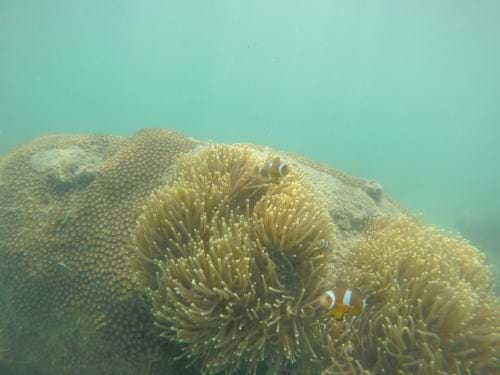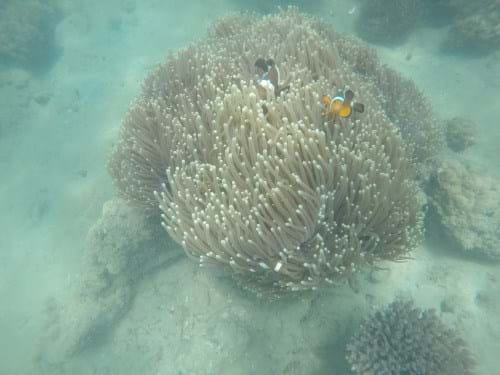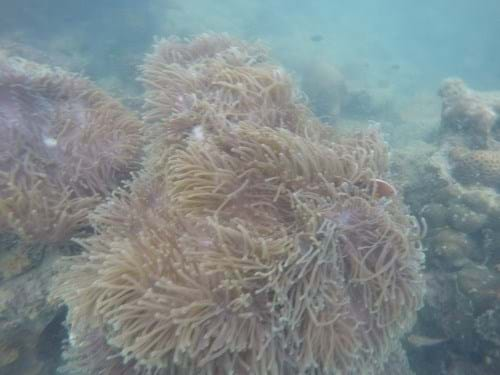Win-win!
The symbiosis which benefits both organisms interacting with each other is known as mutualism. We see mutualism everywhere in nature, which is epitomised in the ocean by the relationship between the sea anemone and the anemonefish.

Sea anemone host and resident anemonefish in the Datai Bay.
Sea anemone play host to anemonefish and both are obligatory symbionts, meaning that each species is highly dependent on the other for survival and one cannot live without the other. In this mutualistic relationship, the anemonefish feeds on invertebrates and wards off butterflyfish that are harmful to the sea anemone, and the waste from the anemonefish is recycled by the sea anemone as nutrients. In addition to that, the stinging cells of the sea anemone protect the anemonefish from predators while not harming the anemonefish because of a special mucus on the anemonefish’s skin.
There are about 30 species of anemonefish in the world and two of them have been identified in the Datai Bay. Firstly, we have the common False percula clownfish (Amphiprion ocellaris). It looks like Nemo from Pixar’s Finding Nemo but is actually a separate species! (Nemo is actually a “true” Percula clownfish, Amphiprion percula. Nemo is distinguishable for having one less dorsal spine and thicker blackfin outlines than the False percula clownfish.) Secondly, we have the slightly rarer Pink skunk clownfish (Amphiprion perideraion).

Some False percula clownfish in the Datai Bay.

A Pink skunk clownfish saying “Hi” in the Datai Bay.
We can count ourselves lucky for having two species of anemonefish in the Datai bay as only among ten species of sea anemone in the world can host anemonefish and only with specific compatibility! (Both species of anemonefish in the Datai bay seem to be hosted by the Ritteri anemone, Heteractis magnifica.)
The video shows a family of Pink skunk clownfish at the Datai Bay. Watch it in HD!